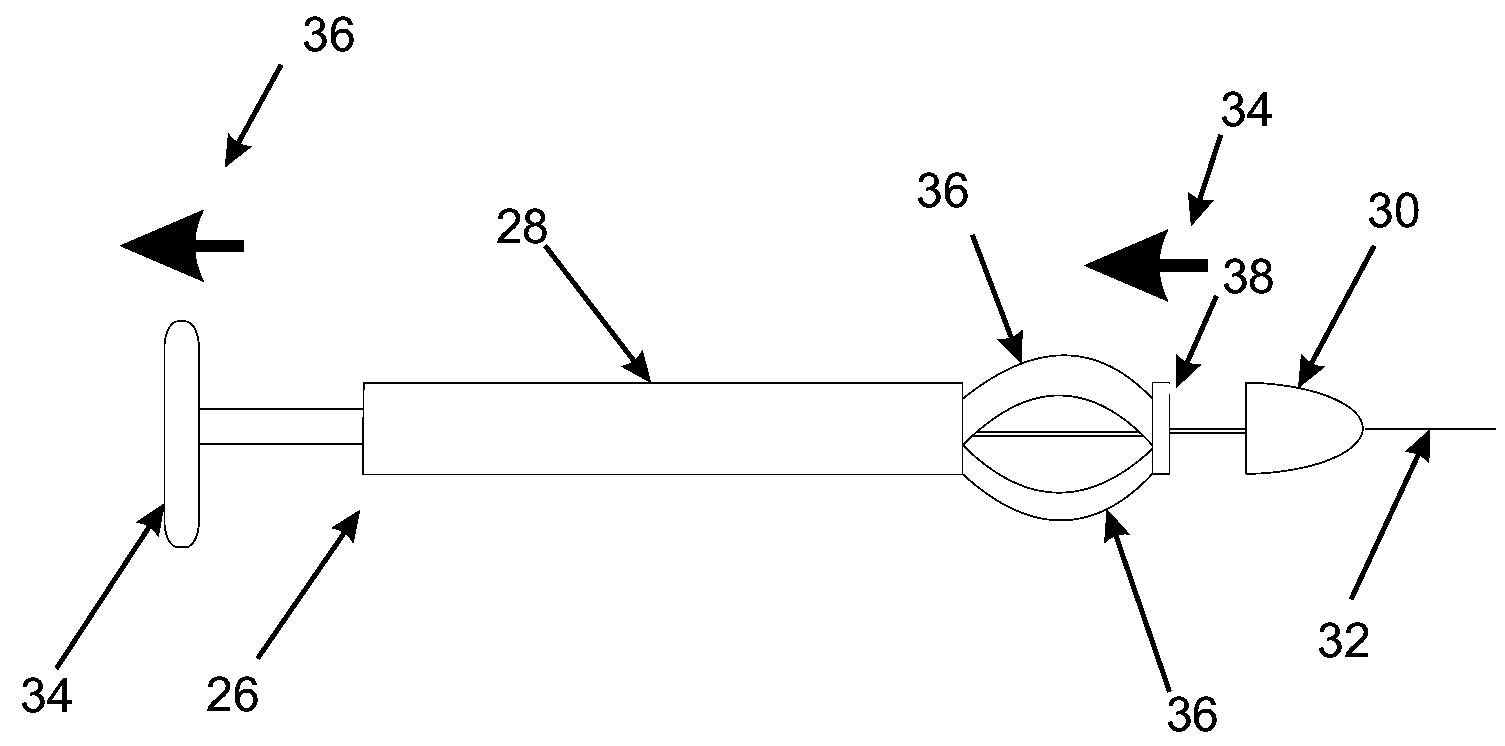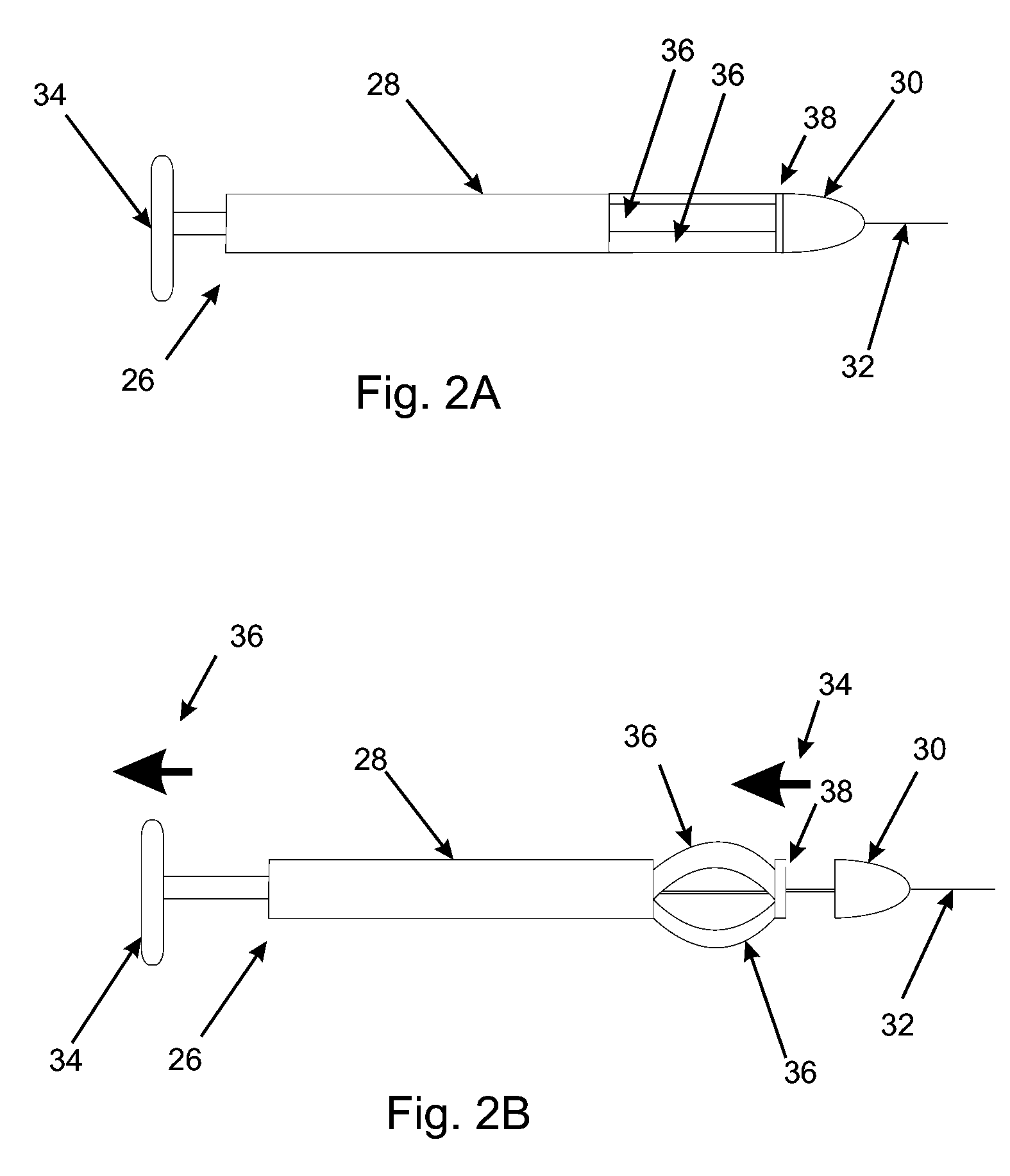Treatment of Coronary Stenosis
a technology for coronary arteries and stenosis, which is applied in the field of coronary artery surgery, can solve the problems of limited operation to a small percentage of patients, limited application of techniques, and damage to tissue,
- Summary
- Abstract
- Description
- Claims
- Application Information
AI Technical Summary
Benefits of technology
Problems solved by technology
Method used
Image
Examples
Embodiment Construction
[0035]In view of the limitations now present in the prior art, the present invention provides new and useful features and mechanisms for the incision of the coronary artery and myocardium. The present invention utilizes an alignment means to properly position a cutting means, a cutting means to perform cutting of the coronary artery and myocardium, a dilating means to expand the vessel and a perfusing means to supply blood to the distal portion of the vessel.
[0036]The alignment means, cutting means, and perfusing means are contained in an endovascular catheter(s). Preferably, the catheter is formed with a guidewire lumen which extends the=rough the length of the catheter and through which a guidewire may be run. The guidewire may be chosen from a variety of medical guidewire types well known in the art.
[0037]When properly placed into position from the periphery, these embodiments, in coordination with one another, are used to reconfigure the blood vessel to a desired new geometry. O...
PUM
 Login to View More
Login to View More Abstract
Description
Claims
Application Information
 Login to View More
Login to View More - R&D
- Intellectual Property
- Life Sciences
- Materials
- Tech Scout
- Unparalleled Data Quality
- Higher Quality Content
- 60% Fewer Hallucinations
Browse by: Latest US Patents, China's latest patents, Technical Efficacy Thesaurus, Application Domain, Technology Topic, Popular Technical Reports.
© 2025 PatSnap. All rights reserved.Legal|Privacy policy|Modern Slavery Act Transparency Statement|Sitemap|About US| Contact US: help@patsnap.com



